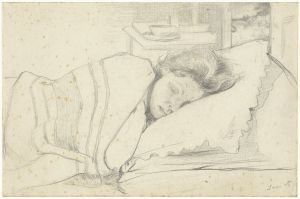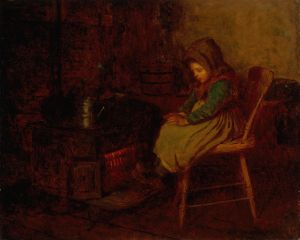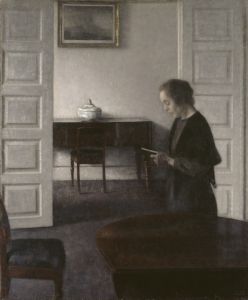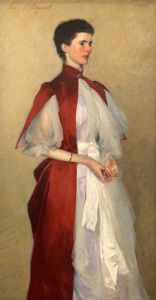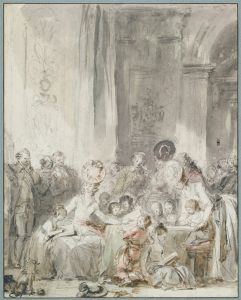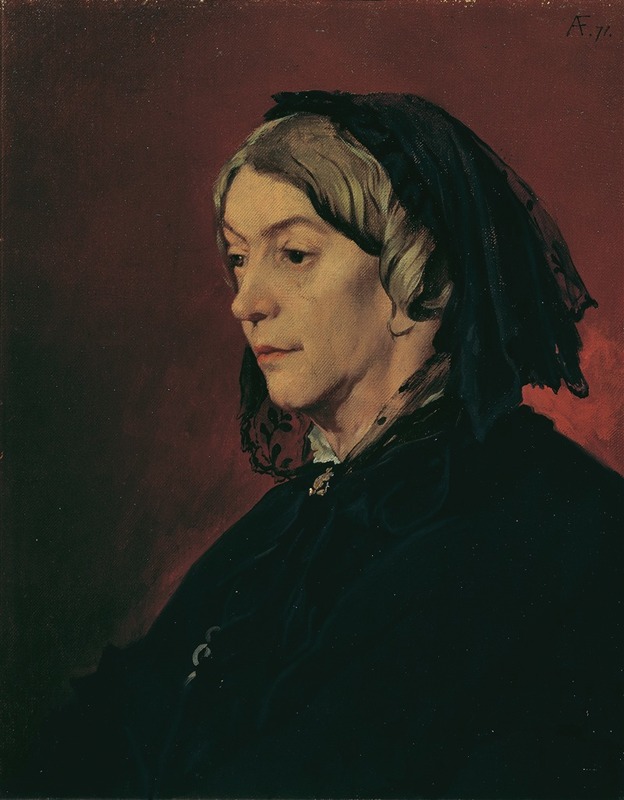
Henriette Feuerbach, the artist’s stepmother
A hand-painted replica of Anselm Feuerbach’s masterpiece Henriette Feuerbach, the artist’s stepmother, meticulously crafted by professional artists to capture the true essence of the original. Each piece is created with museum-quality canvas and rare mineral pigments, carefully painted by experienced artists with delicate brushstrokes and rich, layered colors to perfectly recreate the texture of the original artwork. Unlike machine-printed reproductions, this hand-painted version brings the painting to life, infused with the artist’s emotions and skill in every stroke. Whether for personal collection or home decoration, it instantly elevates the artistic atmosphere of any space.
Henriette Feuerbach, the artist’s stepmother by Anselm Feuerbach, is a portrait painting created by the German painter Anselm Feuerbach (1829–1880), one of the most prominent figures of the German Romantic and Classicist art movements. The painting depicts Henriette Feuerbach, who was the stepmother of the artist and played a significant role in his personal and professional life.
Henriette Feuerbach (1812–1892) married Anselm Feuerbach's father, Joseph Anselm Feuerbach, a classical philologist and archaeologist, after the death of Anselm's biological mother. Henriette became a central figure in Anselm's life, offering him emotional and financial support throughout his career. Their relationship was marked by mutual respect and affection, and Henriette's influence on Anselm's life extended beyond familial ties, as she also supported his artistic endeavors.
The portrait is considered a testament to the close bond between the artist and his stepmother. It reflects Anselm Feuerbach's characteristic style, which combined elements of Romanticism and Classicism. Known for his refined technique and idealized representations, Feuerbach often drew inspiration from classical antiquity and Renaissance art. In this painting, he captures Henriette with a sense of dignity and introspection, emphasizing her importance in his life.
The exact date of the painting is not definitively documented, but it is believed to have been created during the later years of Anselm Feuerbach's career, possibly in the 1860s or 1870s. The work showcases Feuerbach's mastery of portraiture, particularly his ability to convey the psychological depth and individuality of his subjects. The subdued color palette and soft lighting are characteristic of his approach, lending the portrait a timeless and serene quality.
Henriette Feuerbach's support for Anselm extended beyond his lifetime. After his death in 1880, she dedicated herself to preserving his legacy, publishing his letters and writings, and promoting his work to ensure his place in art history. Her efforts were instrumental in securing recognition for Anselm Feuerbach as one of the leading painters of his time.
The painting is housed in the Staatliche Kunsthalle Karlsruhe in Germany, which holds a significant collection of Anselm Feuerbach's works. It remains an important piece for understanding the personal and artistic connections that shaped Feuerbach's life and career.












